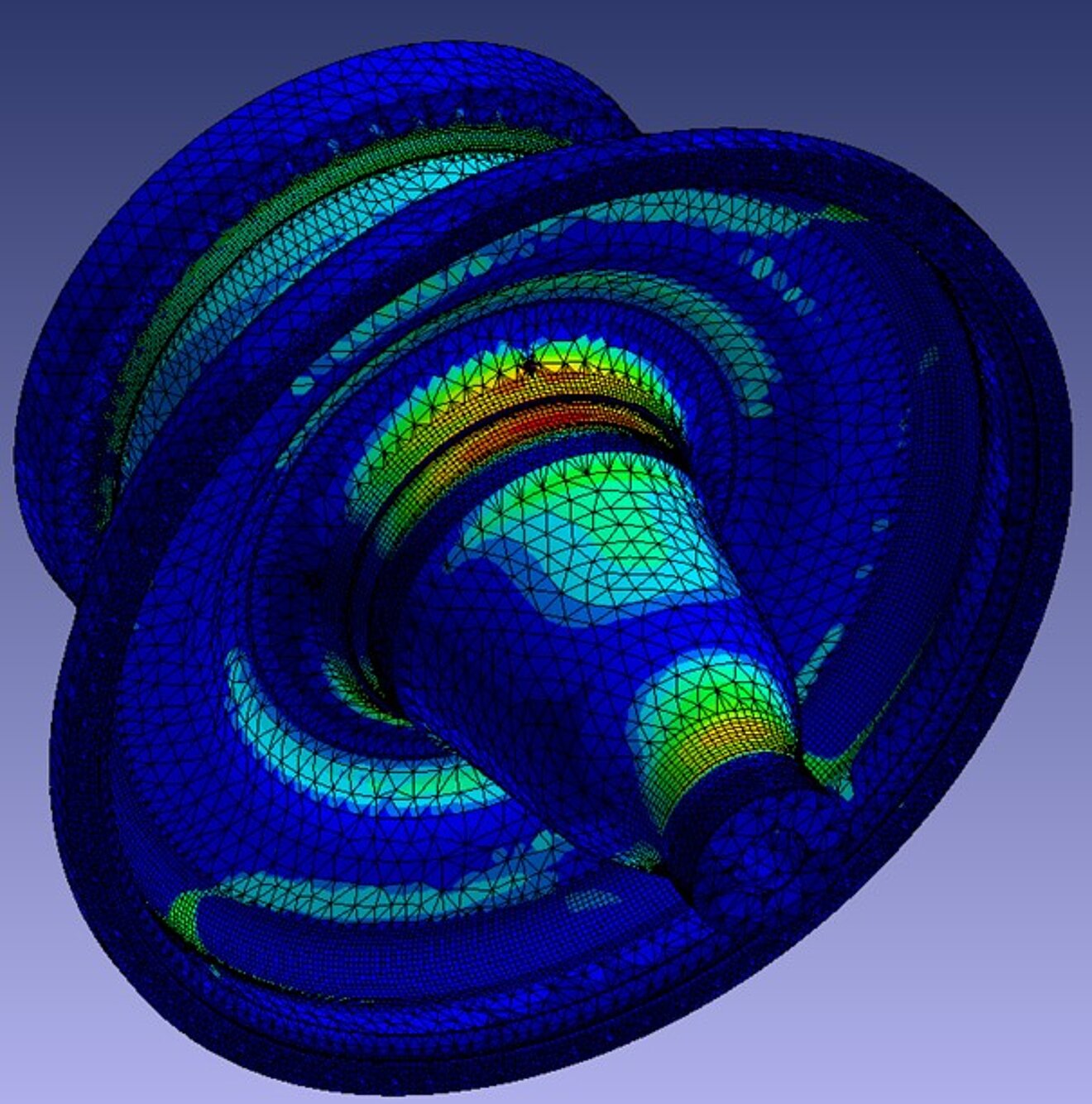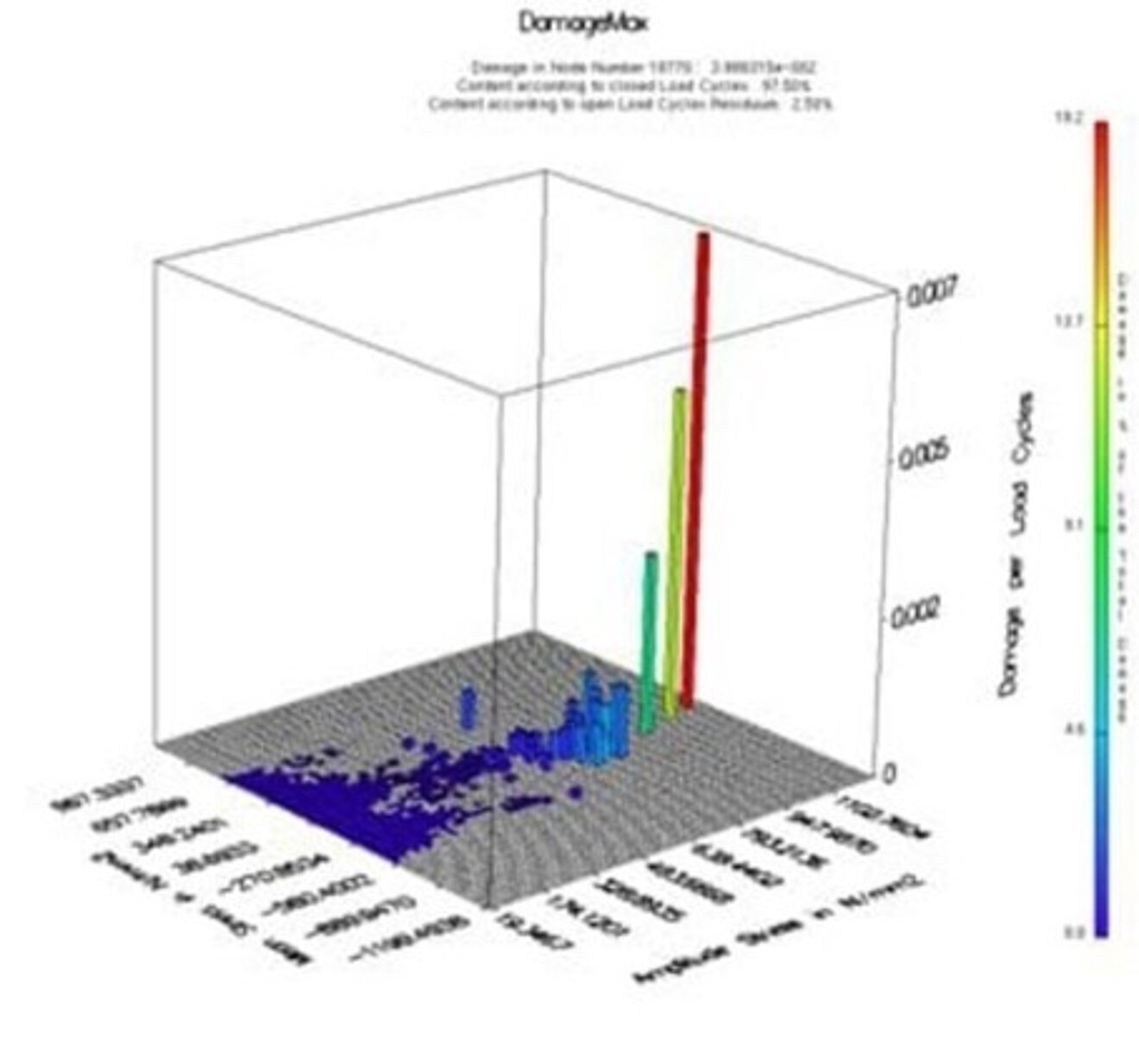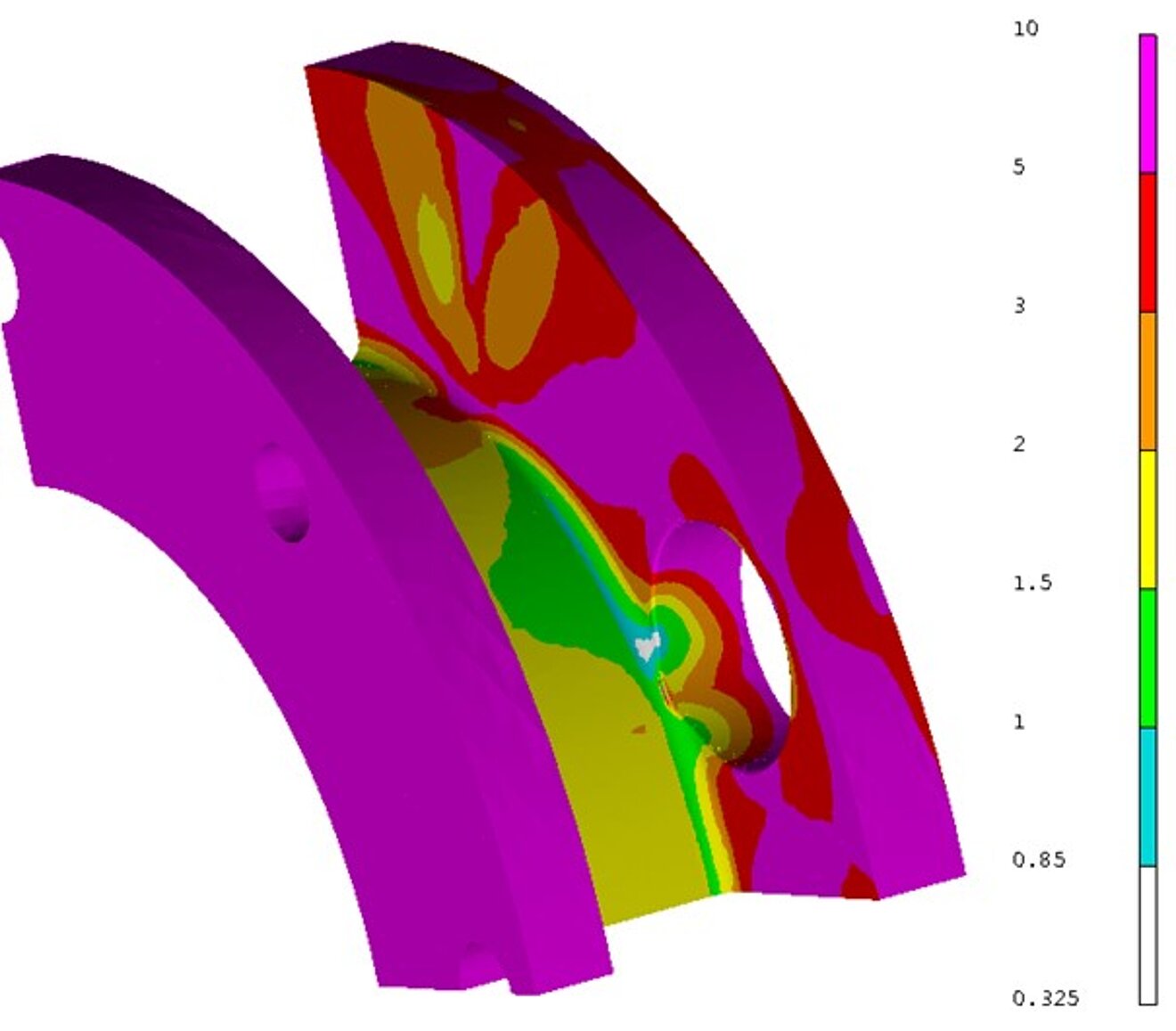Strength assessment of wind power gearboxes


Task / Calculation
Merkle & Partner has been involved in the calculation of wind turbines, especially the gearboxes, from a very early stage. Long before the energy turnaround led to wind turbines being built in all possible and impossible places.
The difficulty in the calculation is that no permanent proof is possible for the maximum loads to be expected. One only has to think of hurricane-like gusts, which lead to short-term load peaks, but which rarely occur within the lifetime of a wind turbine. Here, measurements of existing turbines are helpful, from which a so-called load spectrum can be derived. From the measurement one counts the frequencies of events and the corresponding load amplitudes. This can be illustrated by a simple example.
Consider a chair on which people of different weight classes sit. Suppose a sumo wrestler with 180 kg sits on the chair 10 times until it collapses. A heavyweight person weighing 120 kg can sit down 1000 times. People weighing less than 80 kg can sit down any number of times without the chair breaking. In this case, the chair is said to be durable for this weight.
If one were to form the following classes: 0-80 kg, 80-120 kg and 120-180 kg and count how often people of the respective weight classes take a seat in the course of a chair day, one could predict how long the expected service life of this chair is. It is now assumed that the load spectrum - which is what we are talking about here - is the same every day.
For example, the damage to the chair is 200/1000=0.2 for a person in the 80-120 kg weight class with 200 load changes (1 load change is 1 x sitting down and 1 x standing up). In our example, 13 people in the 0-80 kg weight class and 5 people in the 80 -120 kg weight class sit down on a measurement day, and we know that a sumo wrestler comes to visit once a year. Thus, the damage to the chair on this day is 5/10000 + 1/(365 *10)=0.0008.
At damage 1, theoretically, the chair breaks. This is therefore the case after 1/0.0008=1,250.0 days or 1250/365=3.4247 years.
Persons weighing up to 80 kg do not contribute to the damage, since no breakage occurs here even with very large load cycles.
If you have understood the example, you have understood the procedure with the gearboxes of wind turbines with measured load collectives. Basically, you measure which stress changes occur with which frequency, calculate the damage at each point, add up the damage and display it as a color graph.
Load levels help to prevent the load combinations from growing to infinity. As shown in our chair example, the weight classes are assigned the damage of the highest weight. This approach is therefore conservative, i.e. it is on the safe side.
If the measured period is extrapolated to the service life to be guaranteed, the damage at each point should be less than 1.
Things get a bit more complicated when the load direction changes for different load cases, i.e. when the direction of the principal stresses changes. This can be taken into account by using appropriate tools, such as FEMFAT for service life calculation. The individual load cases, the possible load case combinations (which load cases can occur simultaneously) and the load frequency must therefore be known. In the meantime, there are very well functioning software solutions for the acceptance and classification of the stress into corresponding classes.
Results
The damage investigations of gearbox components of wind turbine gearboxes showed that a few load cases or load combinations are responsible for a large part of the damage. Variant studies of the critical areas made it possible to optimize them in a targeted manner and thus increase the overall service life. The damage that had to be minimized could be selected directly as the optimization target. The great advantage of this approach is that not many load cases have to be considered simultaneously, but one can concentrate on a single variable to be optimized.
Keywords
- Utilization
- Utilization rate
- Damage
- Fatigue strength
- Fatigue
- Fatigue Strength
- FEMFAT
- Load case
- Load case combination
- Load spectrum
- Load levels
- Linear damage accumulation
- Measurement time series
- Medium voltage
- High voltage
- Palmgreen Miner
- Rainflow Matrix
- Damage
- Damage Accumulation
- Safety factor
- Stress amplitude
- Step load
- Wind power gearbox
- Wöhler line
- Fatigue strength


